Poblenou Cemetery is one of the most important cemeteries in Barcelona and after Montjuic Cemetery it is perhaps the second most impressive. However, while the Montjuic Cemetery is located away from the center, the Poblenou Cemetery is just a stone’s throw from the city beach. Cemeteries are often places where one can learn a lot about the history of the city, rather than visiting its monuments. It is no different in this case too, because a visit to this cemetery is an immersion into the local culture, too.
The cemetery of Poblenou a very special cemetery
When we visit a city, cemeteries in general do not occupy an important place in the list of places where we would like to take a walk. There are some cemeteries in the world that have gained some fame and thus tourist interest because of the famous people who are buried in them. The best known examples are perhaps the Pere Lachaise cemetery in Paris (here rest in peace Marie Curie, Voltaire or Jim Morrison among others) or the cemetery of La Recoleta that many people visit basically to see the tomb of Eva Perón, better known as Evita.
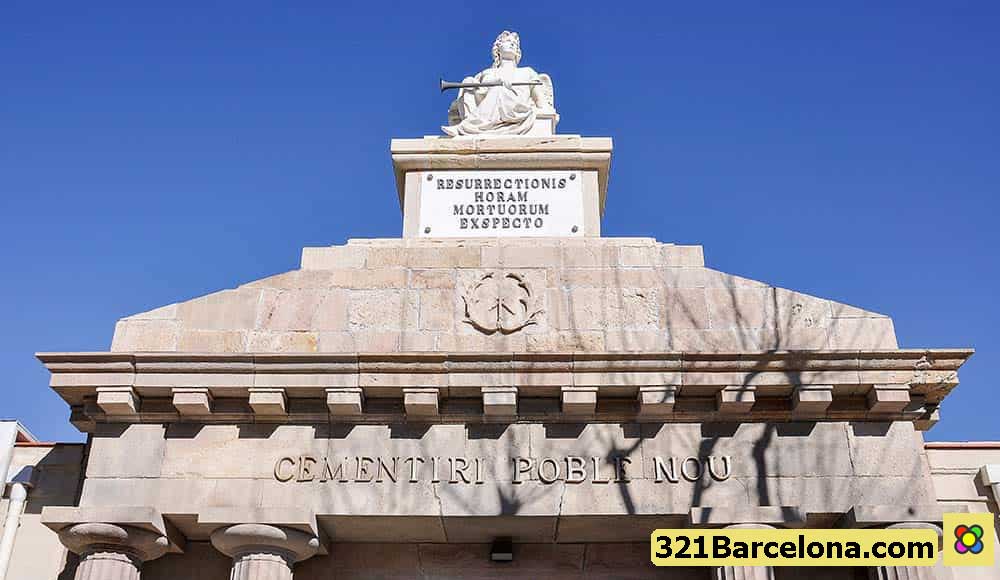
However, there are many cemeteries that look like open-air museums and are really worth spending time in. Now we present you the Poblenou cemetery in Barcelona which was opened in the 18th century. The cemetery had quite a tormented history, it was destroyed by Napoleon’s troops and has lived quite a lot of ignorance from the citizens especially since the opening of the Montjuïc cemetery. Things are changing lately and in 2004 was created a route of cemeteries that also includes the cemetery of Poblenou.
The most interesting corners of the Poblenou Cemetery
he current structure of the Poblenou cemetery was designed by the Italian architect Ginesi at the beginning of the 19th century and the Pisa cemetery served as a model for the construction. The cemetery has two parts, the one closest to the entrance houses thousands of simple niches.
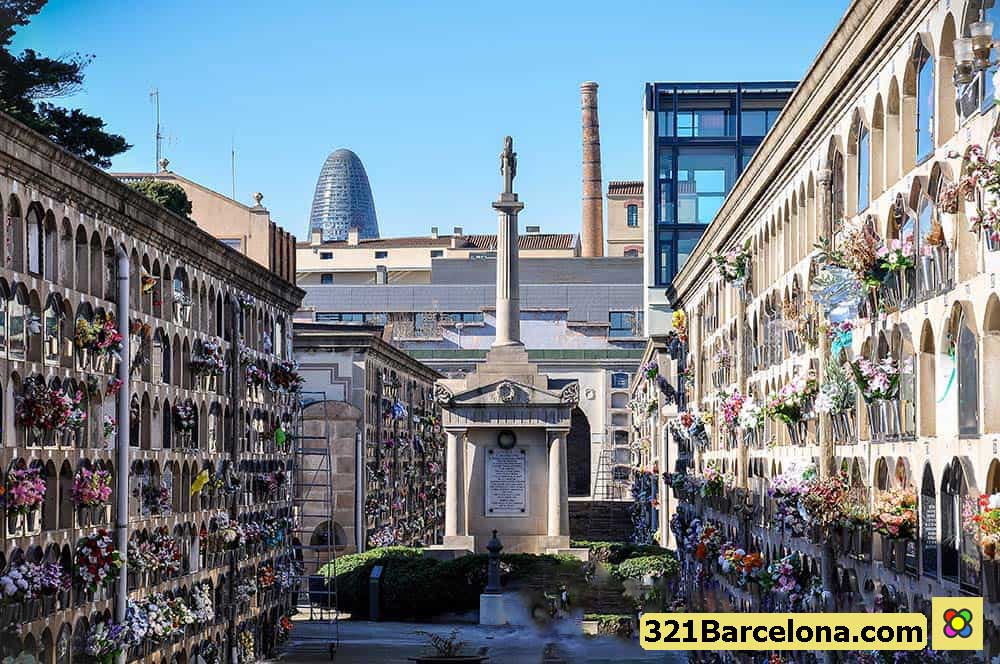
In the rear part are the monuments and crypts of an important part of the Catalan bourgeoisie. An incomplete list of these characters that at some point played an important role in the evolution of the city, includes the industrialist family Bonaplta, Narcís Monturiol the famous engineer, Valentí Almirall the politician or the novelist Narcís Oller.
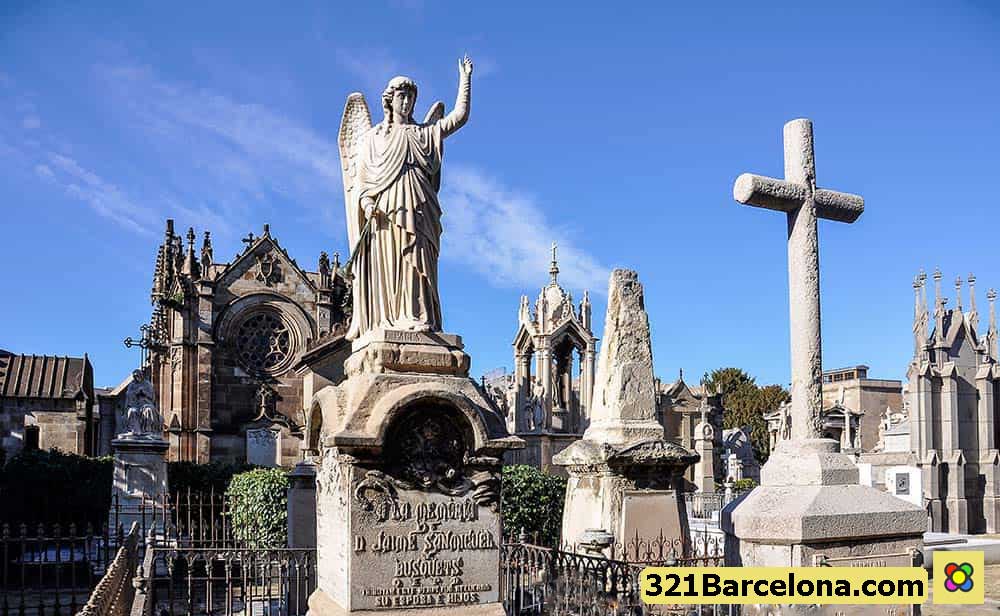
would you like to find the best accommodation deals for your trip?
<script async src="https://pagead2.googlesyndication.com/pagead/js/adsbygoogle.js?client=ca-pub-3321157135982919" crossorigin="anonymous"> <ins class=»adsbygoogle» style=»display:block» data-ad-client=»ca-pub-3321157135982919″ data-ad-slot=»2835553220″ data-ad-format=»auto» data-full-width-responsive=»true»> (adsbygoogle = window.adsbygoogle || []).push({});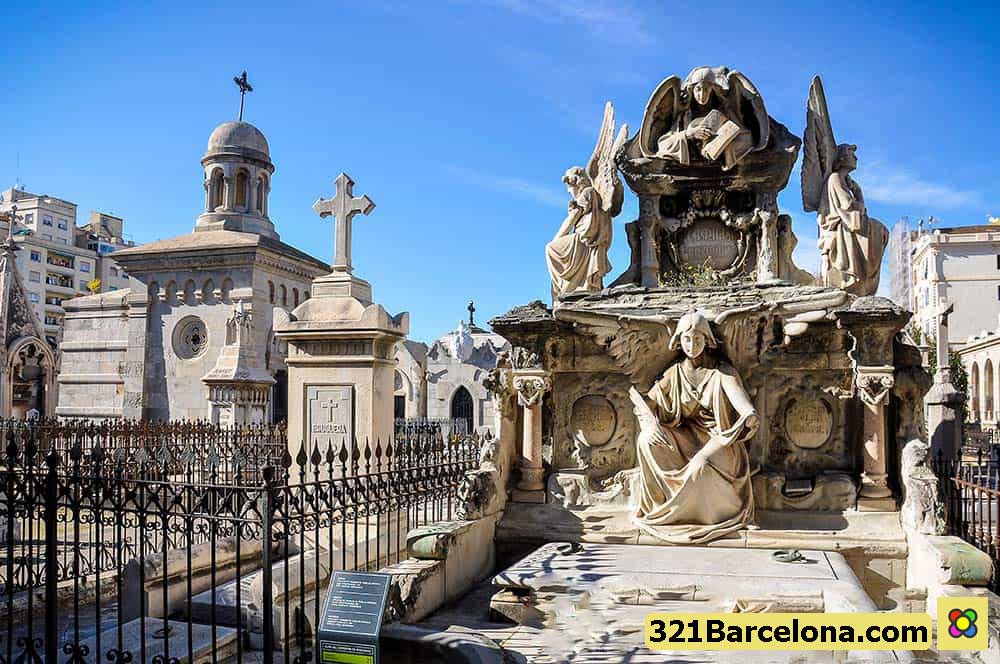
Poblenou Cemetery and popular culture
In the part of the niches are also buried some heroes of the popular Barcelona. Some of them died helping others during one of the several epidemics that the city suffered, others were shot for fighting for the freedom of the city. The best known among them is probably Francesc Canals Ambrós (el Santet) who died when he was only 22 years old. This boy from a humble family was known for his charity and kindness. After his death, he became the object of adoration of the people. Many locals still visit his tomb today and bring him a gift to express their devotion.
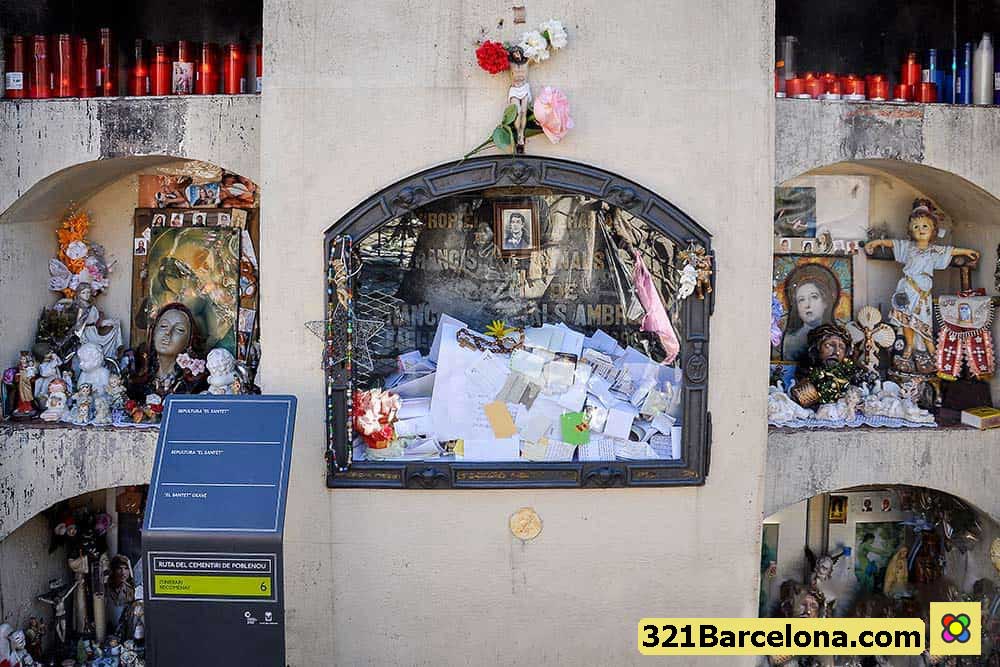
At the entrance of the cemetery of Poblenou we can pick up a map in which a marked itinerary points out the most important places to visit. The visit lasts about an hour and we will be able to contemplate many of these crypts that are small works of art, some of them not so small.
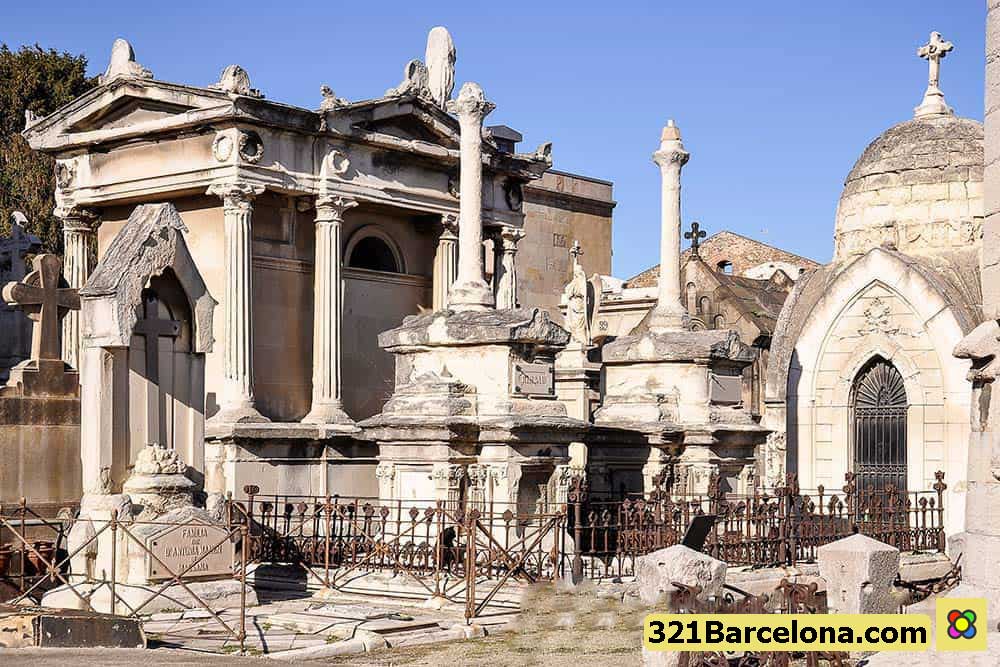
are you interested in an organized excursion or guided tour?
find here the best excursions and guided tours in Barcelona!
Art in the Poblenou Cemetery
The route ends with a very peculiar statue by Jaume Barba calledEl beso de la muerte (The kiss of death)and we found it quite impressive. A skeleton with wings kissing a young man on the cheek; a striking representation of death.
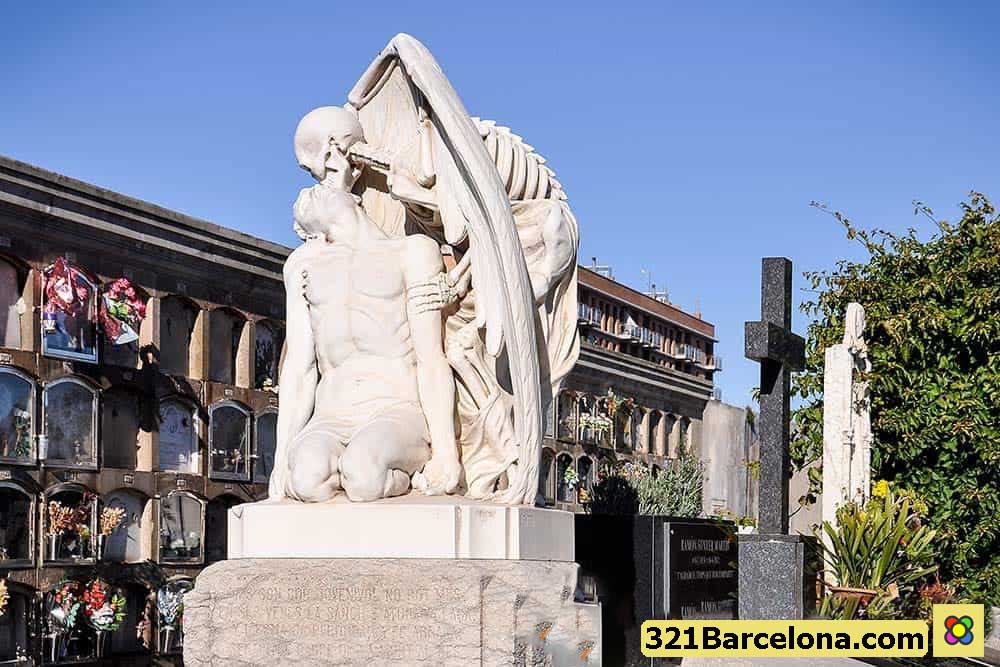
How to get to Poblenou Cemetery
The cemetery is located in the Poblenou neighborhood a few meters from the Bogatell Beach in Barcelona. The easiest way to get there is to take the yellow metro line and get off at the Llacuna stop. From there just a quick walk to the cemetery. If you are already doing a walk on the beach, it is worth making a small detour to visit this little known corner of Barcelona.
All Saints’ Day in Catalonia
Before finishing the article, we also want to dedicate a section to the feast of All Saints, the day that most people go to a cemetery. Depending on the area of Spain this holiday is celebrated with different traditions, we (since this post focuses on the city of Barcelona) will talk about the Catalan traditions. In Catalonia the «castañada» is celebrated, friends and families get together to eat chestnuts, sweet potatoes and «panellets» (a typical sweet of this time based on almonds). The fact of eating these things with so many calories seems to be because in ancient times on the night of November 31 the bells were rung until the early hours of the morning and this work required a lot of energy. The chestnut festival is represented by the figure of a chestnut seller; an old woman sitting in the street cooking chestnuts and sweet potatoes.
In recent years the Catalan traditions for this day of all saints coexist with Halloween and both festivities are mixed. Consult their website, because they usually have an exhibition of old funeral floats and a daytime route to enjoy all its architecture. During the week of Halloween or All Saints-Castanyada, they hold terrifying events…
The cemetery of Poblenou seemed to us a very interesting place that deserves to be visited. On top of that, it is close to the beach, so after the cultural visit we can relax and sunbathe on the beach. For a more complete guide to the city, take a look at our itinerary of what to see in Barcelona in 3 days.
Have you visited a cemetery during your travels? Do you find it interesting to visit a cemetery as if it were a museum or do you find them depressing and try to avoid them?
ins.adsbygoogle { background: transparent !important; }